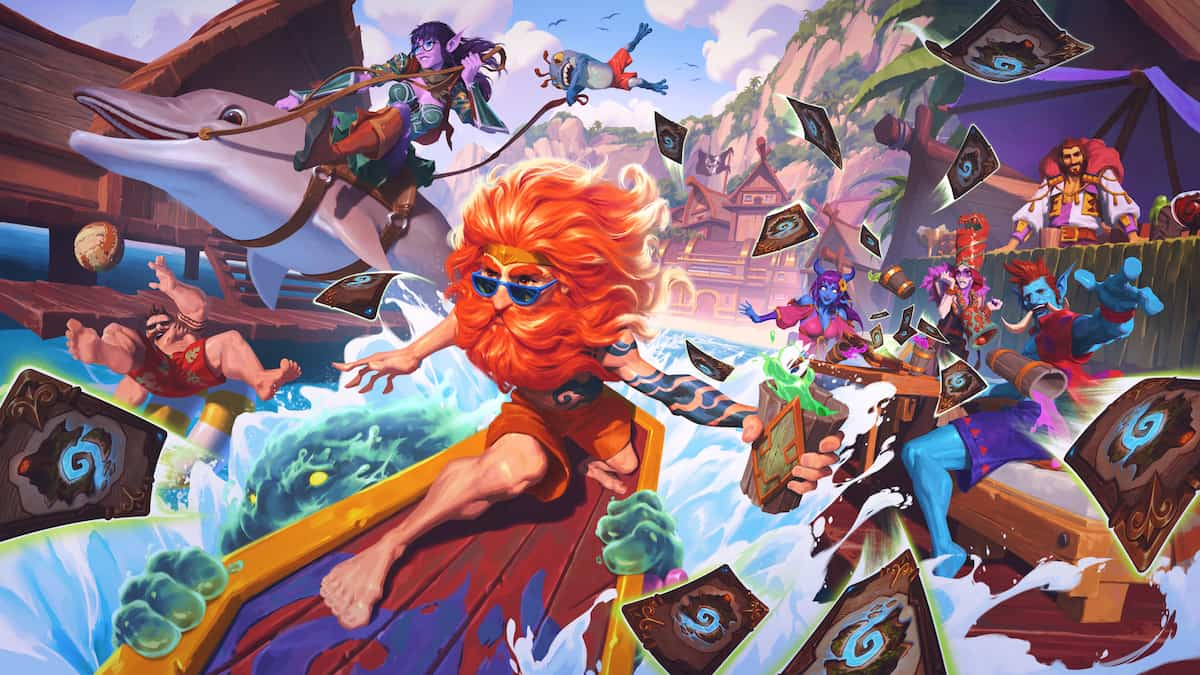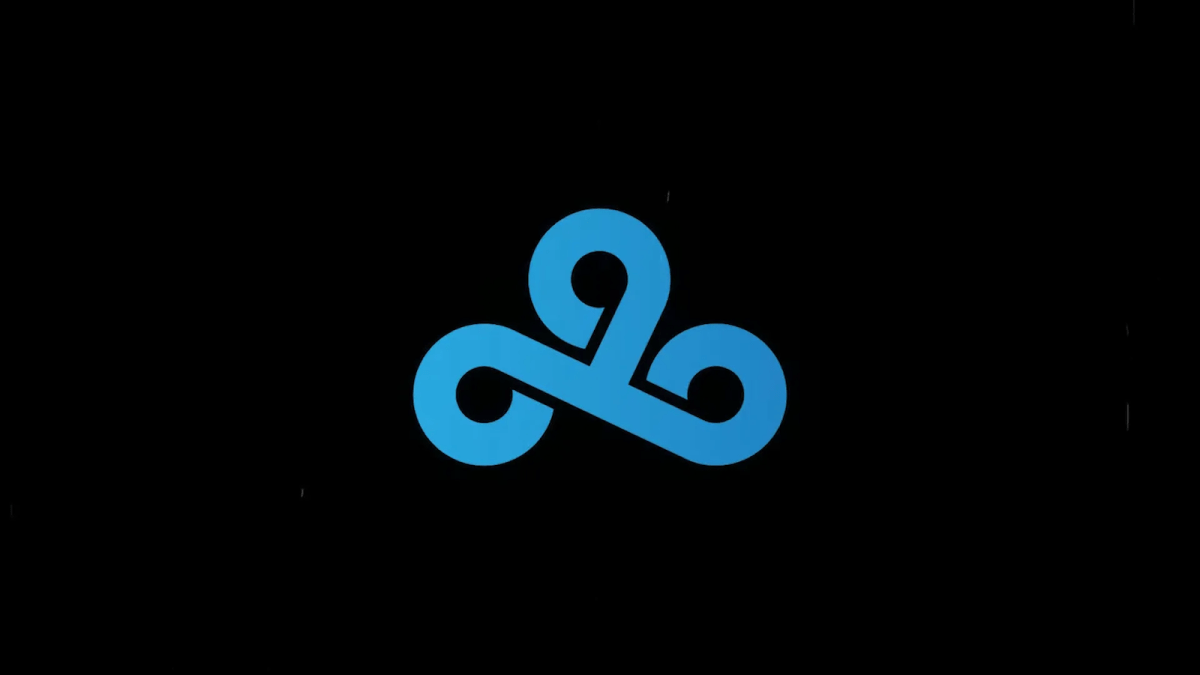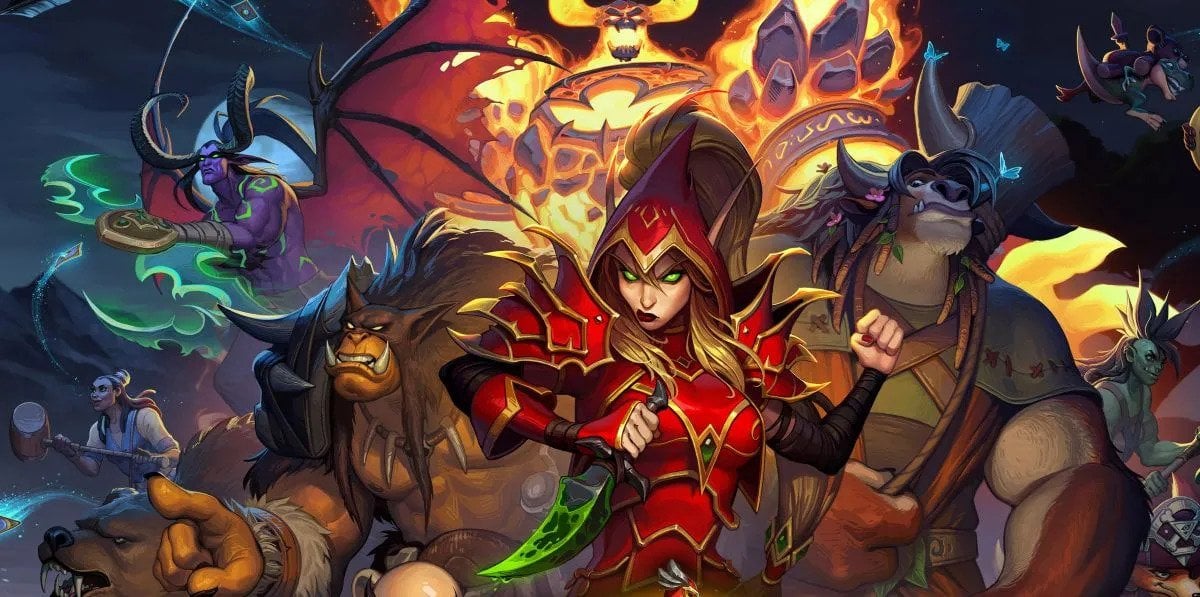Introduction
Greetings, dear readers, and welcome to the test run of ”Mulligan Phase”, a hopefully upcoming series of articles dedicated to the design philosophy in Hearthstone, from my point of view, which sometimes uses other card games as examples. Last week we’ve had an article that was all about the idea behind the curve in card games and Hearthstone being a ”Curvestone” game. I’ve explored the meaning and reasoning behind the curve in card games and I’ve given you an example of what Hearthstone would look like if it was a 100% play on curve game. If you’ve missed that article and are interested in reading it you can find it here.
Today I wish to talk about a very controversial topic in the Hearthstone community and that is card nerfs. I will give you my opinion behind the existence of card nerfs, what is the best way to nerf cards and should cards even be nerfed and I’ll show you how things are handled in other card games. Keep in mind that I’m a physical card game player first and a digital card game player second. I have very little to none experience in digital card games besides Hearthstone and Gwent so I will talk about physical card games instead. However, you can’t nerf physical cards so what I’m going to use for the comparison are bans. They are the closest that we get to nerfs in physical card games.
Sit back, relax, and let’s dive right into this! 🙂
Nerfs and Bans
Since I’ve already mentioned that I will be drawing a comparison between nerfs and bans I might as well talk about that first. In digital card games like Hearthstone we have card nerfs and the purpose behind card nerfs is to balance the metagame by balancing both the troublesome cards and the troublesome decks that have those cards in them. Although nerfs don’t happen as often as some would like them to happen, the impact that they have on the metagame is usually huge. There are exceptions to this and exceptions usually happen when not enough cards from a troublesome deck are nerfed. Those exceptions, however, are a pretty occurence. It might seem to some like there are exceptions with every nerf wave but it has been like that only for the past year. Nerfs which had happened before the standard and wild split did have a huge impact on both the metagame.
Bans, while not exclusive to physical card games, are a replacement for nerfs in the real word. Because it is impossible to nerf cards in the real world there needs to be a replacement way to handle troublesome decks. Banning cards is the only possible way of moderating the metagame but it is not the one that some companies gladly resort to. While in some games, like Yu-Gi-Oh!, you have a ban list that regularly updates and has tons of cards on it, other games like Magic: The Gathering usually refrain themselves for adding cards to the ban list and it is only in the most extreme of cases that a card is banned. We’ve recently had our first card bans in the standard format in the last 6 years. Another example, Vs System, had 12 banned cards in 5 years of its existence.
To sum this up, both nerfing and banning act as a means of stabilizing the metagame. I’m not aware of a digital card game that has bans as well as nerfs but if anyone of my readers knows about such a game than I would be very grateful if you would point me towards it so that I can see for myself how does that work 🙂
Hall Of Fame
Next point that I want to talk about is the Hall of Fame, a recent introduction to Hearthstone, and a way to stop nerfing cards and instead just throwing them into the wild format with the hope that everything will work out for the best. I am a huge fan of Hall of Fame because I’m a wild player and this is my chance to craft some golden cards and get a full refund for them without disenchanting them. Last time that I’ve talked about Hall of Fame I’ve praised it to no end but today I’m going to go a bit deeper into this concept, see what can be improved upon (if anything) and give my final conclusion to it.
Hall of Fame is a way for developers to nerf troublesome decks in the standard format by moving cards to the wild format instead of nerfing them. It is still unknown how often will the cards be sent to the Hall of Fame but if I’m to guess I would say that cards will be moved to the Hall of Fame with every nerf wave. However, there is something that I need to add to my statement. You see, I firmly believe that the Hall of Fame is a great concept, it really is a win win situation for both players who play the wild format and players who don’t, but I’m 100% sure that only cards from the classic and maybe, but it is a long shot, basic cards as well, will go into the Hall of Fame and that the other cards which are currently in the standard format will get nerfed instead. All of the cards that are not from the basic and classic set are a temporary part of the standard format while the others are a permanent part of it. If you nerf a temporary addition to the standard format then you’ve solved your problem for the current season of standard but if you nerf a card from an evergreen set than you’ve ruined that card and the decks that revolve around it forever. I’m looking for the simplest way to put it and that would be a comparison between call-of-the-wild and conceal. Both were troublesome cards but one got nerfed and the other was moved to the Hall of Fame. What is the result of that?
Nerfing call-of-the-wild did not kill midrange hunter but it did make the deck a little bit weaker for a certain period of time. Now we have a new midrange hunter deck and there are even some variations of midrange hunter that still run call-of-the-wild. Moving conceal to the Hall of Fame had removed miracle rogue from the standard format, which was the desired goal, but the deck is not dead and it can still be played in the wild format. If conceal was nerfed into unplayability then the entire concept of miracle rogue would have been thrown out of the window and the deck would simply disappear from the game. From this we’ve learned that moving cards to the Hall of Fame is a better solution then nerfing them into unplayability, but the question that we now need to ask ourselves is what about the cards which are not a part of the evergreen sets?
Should cards which are not a part of the evergreen set be nerfed? This is a tricky question to answer because nerfing a key card like conceal kills an entire archetype forever while nerfing a currently standard format card like call-of-the-wild kills the archetype only temporary. With each set there is at least one card that is a bit over the top powerful and is quite unhealthy for the metagame. Currently that card is considered to be the-caverns-below. There are members of the community on both sides of the fence. Some are saying ”Nerf it into oblivion” while others are saying ”throw it into the Hall of Fame”. I’ve taken my time to consider where I stand with the ”solution” to the-caverns-below and I’m going to stand with the ”Nerf it into oblivion” crowd (make a GOOD nerf, don’t make it unplayable). Here’s the deal for me. If the developers choose to move cards into the wild format instead of nerfing them then they are just moving their problem from one format to another. Worse than that, they are making that problem permanent. An unbalanced card like the-caverns-below is going to be an unbalanced card forever and it will plague the wild format forever and ever which will just drive even more people away from the format. That is not a good thing! Just take a look at the pirate warrior! Currently it is the most powerful deck in both formats and if they decide to throw some stuff into the wild format than this deck will be the most powerful deck in the wild format…forever.
I’m all for nerfing cards which are in the standard format only temporarily. Basic and classic cards have been played into oblivion over the course of the last 3 years or so. We know that none of them are really game breaking and most of them are just decent cards. A lot of them went through various changes and some were even nerfed but you never really see a card from that set being the source of a problem until another card comes along and makes it a problem. What I mean to say is that card nerfs should still exist for all cards that are not from an evergreen set. I’m not a nerf happy person but I think that this is really the best solution for both formats.
Creating a Banlist?
Another point that I wish to tackle is the creation of a banlist in Hearthstone. For those of you who might not know what a banlist is, a banlist is a list of cards that are forbidden to use in a certain format or, in some extreme cases, in all formats. Banlists can be temporary of they can be permanent. It all depends on the card game and the company behind the banlist. These lists are usually made after compiling tons of data and analyzing the impact that some cards may have when combined with cards that are coming out in the future. Short answer: a banlist is a real world equivalent to a nerf.
Hearthstone is a digital card game and because of that we do have nerfs in it but there is a part of the community that has been calling out for bans as well. Bans could be both temporary or permanent and their job is to try to balance out the current metagame but are they really necessary? Surprisingly I would say that a banlist is actually not a bad idea at all. Now, let me explain myself. I’m strongly against a permanent banlist but I have nothing against a regularly updated temporary banlist. In my eyes, a banlist could serve the purpose of testing the water and seeing how would the metagame shape and react if some cards and some decks are temporarily taken out of equation. It would help the developers come up with solutions for problematic cards (if they indeed need any solutions) while giving them a clear picture on what would a metagame look like if a certain card didn’t exist. For example, a lot of players are currently calling for the nerf of the-caverns-below. How about instead of nerfing the cards, the developers make a one month banlist and, starting next month, they ban the-caverns-below to see what impact will that have on the standard metagame. If the removal of the-caverns-below results in a much healthier and diverse metagame then they know that the-caverns-below was the problem all along and that something needs to be done about the card aka it needs to be nerfed. If the result is an even worse metagame then that means that there is a much bigger problem than the-caverns-below and they can use that one month to try to figure the problem out. Maybe next month they will remove another card and see what will happen then? I think that this would be a great idea and that it will keep the standard format fresh.
The real reason as to why I would love to have a banlist is because of the wild format. Powerful decks rotate out, they go into the wild format and once there they just stick around forever and ever. The developers are unable to nerf any of the cards in the wild format without directly affecting the standard format as well (unless they are wild exclusive cards). Banning some cards from time to time will result in a much healthier metagame. I’m not saying that some cards should be nerfed forever, I’m just saying take a look at my last metagame report and you will see that the pirate warrior is absolutely dominating the wild format ladder and it has been doing so ever since the Mean Streets of Gadgetzan. Something really needs to be done and a banlist might just be the answer. Temporarily ban some pirates in the wild format and see how it goes. They will hopefully be banned forever but I wouldn’t really hold my breath for even a temporary banlist.
In summary, a banlist is a good way of keeping both metagames as fresh as possible. It is good for all the players who seek variety in the game and it is good for the developers because it shows them just what kind of metagame can they expect should they decide to nerf the banned cards 🙂
Conclusion
We’ve reached the end of yet another ”Mulligan Phase” article. I’m starting to enjoy these articles because they are a way for me to talk to all of you about issues that Hearthstone faces other than single cards and I quite enjoy sharing my knowledge of card design and various card games with all of you. I think that I might just make ”Mulligan Phase” an article series. I think that it might be interesting for some of you who are completely new to card games to see how things function in other card games and why do they function the way that they do. I know that nerfs and bans are a controversial topic to some because not everyone wants to see their favorite deck or card go away, I get it, and, believe it or not, there are people out there who really do enjoy playing pirate warrior and I think that, despite my personal feelings for the deck, it is still important to take their opinions into consideration while discussing nerfs and bans. So, how do you stand on moving cards from rotating set into the Hall of Fame? Are you up for it or are you against it? Do you think that the game could use a banlist regardless of the existence of nerfs and moving cards to the wild format? Leave your opinions and feedback in the comment section below and I will respond as soon as I can. As always if you’ve liked this article do consider following me on twitter https://twitter.com/Eternal_HS. There you can ask me all sorts of Hearthstone questions (unrelated to this article) and I’ll gladly answer them as best as I can!





Published: May 30, 2017 04:48 pm